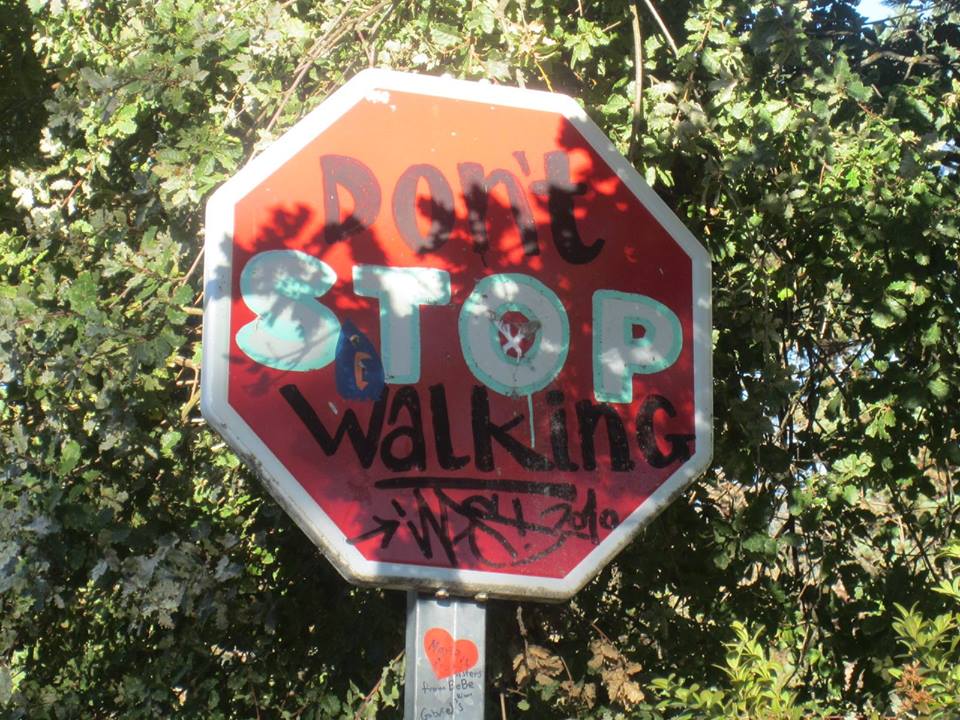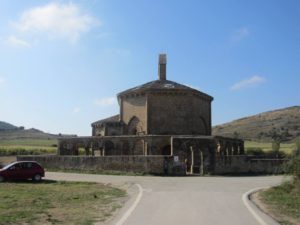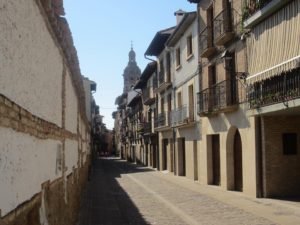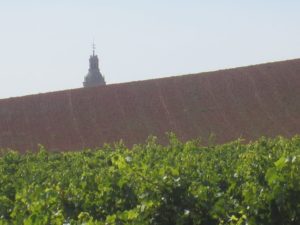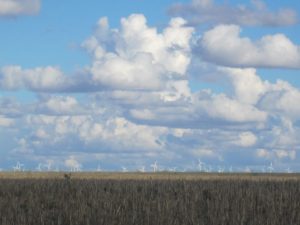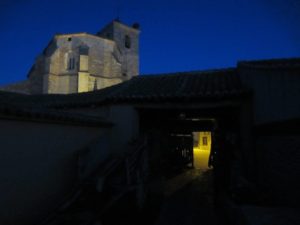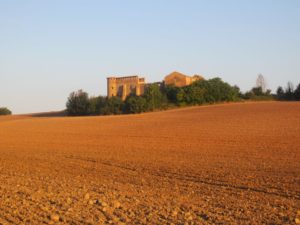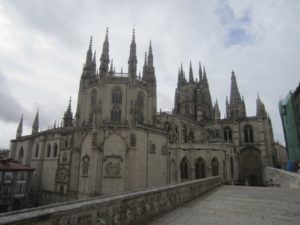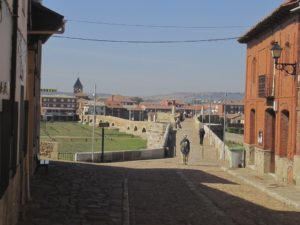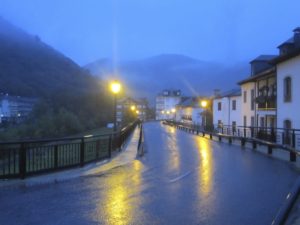CAMINO FRANCES
THE CLASSIC CAMINO
For most people in the Camino universe, the Camino Frances is the Camino. This is the main path to the city of Santiago de Compostela that calls thousands of people to walk all or a portion of it every year. Most people start their journey in the French town of Saint Jean Pied de Port, or across the border in the mountain village of Roncesvalles in Spain. Covering a distance of about 800 kilometres, this pilgrimage takes about a month to complete when covering an average distance of about 25 km per day. It is the best resourced of all the Caminos, with albergues (accommodation specifically for pilgrims) at regular intervals, plenty of local restaurants, cafes and bars serving up good food, and enough shops and pharmacies to cater for all other needs and emergencies.

This route is rich in history, and its diverse landscape winds its way from the mountains and meadows of the Pyrenees, through the ochre terrain of Navarra, the vineyards of La Rioja, the epic plains of the Meseta, before crossing the formidable Cordillera Cantibrica mountain range into luscious verdant region of Galicia in Spain’s northwest, where legend claims that the remains of the apostle Saint James are housed in Santiago’s majestic cathedral.
A walk on this Camino will bring you through a wide array of charming village, towns and cities, which vary considerably in size and character. From the Basque styled hamlets of Navarra, through Romanesque jewels like Puenta la Reina and Estella, the adobe villages on the plains of Castilla Y Leon, to the stone cottages and horreos (corn stores) of Galicia, this Camino is a visual feast of architectural and cultural delights. Pilgrims will also pass through the cities of Pamplona, famed for the running of the bulls, Logrono, the capital of Spain’s wine producing district, Burgos, whose majestic Gothic cathedral is a UNESCO World Heritage Site, Leon, whose cathedral contains one of the world’s largest collection of stained glass windows, through Ponferrada, with its magnificently preserved Templar castle, and finally onto the beautiful medieval city of Santiago de Compostela, where most people conclude their journey after giving thanks to Saint James for a safe passage.
Pilgrims need to obtain a credencial, or pilgrim’s passport, to be eligible to stay in the albergues. These are normally acquired in St. Jean, Roncesvalles, or any of the main starting points. The credencial is presented to the person running the albergue (known as hospitalero or hospitalera) where it is stamped. On reaching Santiago, the pilgrim presents their credencial at the Pilgrim’s Office, where they will receive a certificate of completion called a Compostela. Only those who walk at least 100 km are entitled to receive this. The town of Sarria in Galicia is normally the last point that pilgrims can begin their journey if they want to receive a Compostela.
The route is very well marked with yellow arrows. These, along with the Camino shell, are the main indicators of the route. Yellow arrows painted on the sides of buildings, footpaths and roads are the common source of direction in villages, towns and cities. Sometimes these can be hard to spot, but locals are always willing to help out a lost pilgrim. Bollards with the Camino shell are more common in rural settings. Getting lost is part of the experience, but those who do will invariably find their way back. Many people who walk the Camino are symbolically lost anyway, so occasionally losing the path is a fitting part of the journey.
The Camino Frances is popular among people of all ages, with pilgrims coming from all parts of the planet to walk it. For some it is a profound religious journey, for others it is a personal quest or a physical challenge. Some people walk with their partners, families or friends, others start the journey alone. Friendships and Camino families quickly develop. Some friendships may only last a few days, more last for the full journey. A select few will last a lifetime. It is said that you meet the people you’re supposed to meet, and the journey will teach you the lessons you need to learn. Whatever your experiences are along the way, nobody leaves the Camino an unchanged person.
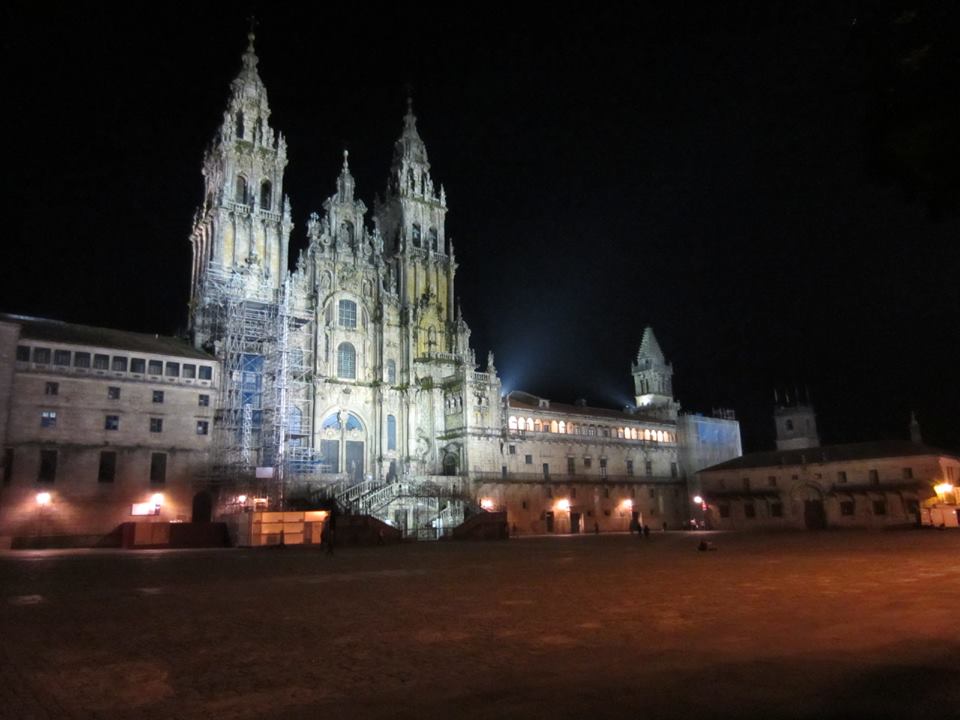
THE STAGES
I’ve outlined a suggested itinerary based on walking the Camino Frances in 2004 and 2013. The route developed significantly from 2004 onwards, with more albergues, more signage, and increased commercial life along the way. No doubt things have changed even more so since I last walked the route in 2013, but much will have remained the same and the distances involved certainly won’t have altered. I’ve chosen Roncesvalles as the starting point as this was where I began both of my Caminos, and it remains a very popular place for people to begin their journeys if approaching from the Spanish side. I didn’t stay in a lot of the regional towns along the way, opting instead for the tranquility of the smaller, remote villages. However, there are lots of different options to choose from, and everyone must follow the path that’s right for them. It was 2013 when I last walked the Francés, so no doubt things have become busier and the resources en route more developed. If you have any questions, please contact me.
A very pleasant stroll for the first day on the Camino. The route passes through forests, mountain meadows, and a series of charming little Basque villages such as Burguete/Auritz, which featured in Ernest Hemmingway’s The Sun Also Rises. Wherever you begin the first day is really special, so enjoy the experience and the marvellous surroundings. The village of Zubiri after 21 KM offers a good stopping point, but if you have enough energy then carry on another 5.5 KM to Larrasoana, which has plentiful accommodation and is a quiet place to get to know your fellow pilgrims.
Today’s walk begins with a very pleasant stroll beside the Rio Arga, before the route changes course and passes near a busy road as it approaches the city of Pamplona. The routine outskirts of the city give way to the old fortified town, which is worth spending a few hours exploring. Given that the following day involves a major uphill climb, pilgrims might be advised to walk a few kilometres beyond Pamplona to the quiet suburb of Cizur Minor, whose private albergue with its peaceful garden is a lovely haven for the night.
Alto de Perdon looms high above Cizur Menor, and the climb to the top is one of the first major physical challenges of the Camino. However, the views from the top more than make the effort worthwhile. The landscape changes quite dramatically on the other side, as the lush mountain terrain of the Pyrenees gives way to dry, dusty agricultural lands of the wine growing region. A short detour to the Templar church at Eunate is a must before stopping off in the beautiful medieval village of Puenta la Reina, whose main selling point is its bridge over the Rio Arga. This town is well supplied with shops, restaurants and albergues.
This section passes through stretches of agricultural land, with vineyards becoming more frequent. The hilltop village of Cirauqui is one of today’s most appealing attractions en route to the town of Estella, which has some fine examples of Romanesque architecture, as well as all the usual supply of shops and facilities. On the town’s far side is a wine fountain, where pilgrims can stock up on free wine for the day’s journey.
You’ll pass the free wine fountain on Estella’s far side. There’s a bit of a climb afterwards to the village of Villamajor de Monjardin. Be sure to check out the Gothic cistern on the way into this village. Villamajor has a nice albergue for those who want to go a little bit beyond Estella. From there on the route is a flat walk through fields until you reach the town of Los Arcos, which has plenty of lodgings and other facilities.
Today you leave Navarra and cross over into the autonomous region of La Rioja, Spain’s wine growing region. Today’s walk is long and offers little shade, so stock up on water when the opportunity arises. The town of Viana after 18 KM is an alternative stopping point along this stage. Cesare Borgia, son of the notorious Pope Alexander VI, died here in 1507 while fighting for the King of Navarra. From Viana, it’s just a short 10 KM on to Logrono, the capital of La Rioja, and the first major city on the Camino since Pamplona.
Once you leave Logrono the route passes by a reservoir, which is the only substantial water feature you’ll see before you reach the ocean. Today’s walk passes the ruins of the Hospital de San Juan de Acre, a place where pilgrims were sheltered in the 12th century and a reminder of the long tradition of people walking this road. The pleasant town of Navarrete is an alternative stopping point, while the remainder of the stage passes through vineyards and fields before reaching the town of Najera. The large municipal albergue can accommodate 60 people, and the hospitaleros frequently offer refreshments to the tired and hungry pilgrims.
Apart from the hill leading out of Najera, this is a largely flat and easy walk through the countryside. Half way along is a golf course and housing development, which was mostly a ghost town when I last passed through in 2013. The town of Santo Domingo de la Calzada has a very nice, modern albergue, and the medieval town is a very pleasant place to wander about after your day’s trek. The catherdral, with its legend of the chickens, is the top attraction in the town. A live hen and cock are still housed within this church.
Another relatively easy and mostly flat stage, veering through some sleepy little villages en route. Today’s walk crosses from La Rioja into the autonomous region of Castilla Y Leon, the largest of all the provinces in Spain. This region is home to the Meseta, the high flat plateau which forms a significant chunk of the Camino. Today’s walk finishes in Belorado, a town that has seen better days but which offers plenty of accommodation and eating choices for pilgrims.
A longer stage than the previous few days, with the option of stopping off earlier in Villafranca Montes de Oca after 12 KM, or San Juan de Ortega after another 12 KM. Those who want a shorter run into Burgos the following day might prefer to walk the extra 3 KM to the village of Ages, which has a decent albergue and restaurant. Much of today’s walk rambles pleasantly through woods and scrub lands.
The village of Atapuerca, just a few kilometres from Ages, hosts a UNESCO World Heritage Site where the bones of some of the earliest settlers in Europe were discovered. A sharp climb follows leading to a summit offering grand views of Burgos in the distance. It’s a long walk from there into the city centre, much of it along a busy thoroughfare and through drab suburbia, but the heart of Burgos is a joy to behold, and its epic Gothic cathedral, another UNESCO World Heritage Site, is not to be missed. Burgos is a big city with plenty to see and do, so if you want a day of rest it might be a good spot to spend an extra night.
The Meseta really begins today. The walk out of Burgos is relatively short and sweet, and the first part of the day’s journey passes along a railway line before arriving at the edge of the vast flat plains of the Meseta. A little village called Hornillos del Camino is an alternative stopping point, but if you have the energy it’s worth walking the extra 10 KM through a stark and haunting landscape to the charming little stone village of Hontanas, one of the jewels of the Camino.
A beautiful walk today, taking you right into the heart of the Meseta. Look out for the ruins of the Convento de San Anton early on, while the nearby town of Castrojeriz is worth stopping in, even if just for a coffee. A steep climb and decent follows, but that’s the last hill for about a week. Enjoy the spartan landscape and the big skies as you make your way towards the village of Boadilla del Camino, where the private albergue with its own pool is one of the most endearing resting spots along the way.
A long flat walk, much of it by canals and barley fields. Fromista is the biggest town of the day, with lots of facilities and choices of lodgings if you decide to spend the evening here. Beyond Fromista the path splits in two. Either follow the main road, which is dreary, or take the more scenic riverside path. Today’s stopping point is Carrion de los Condes, a medium sized town with plenty albergues and restaurants.
A long flat walk of over 17 KM in length greets the pilgrim at the beginning of today’s journey. This is the real Meseta, sparse, flat, barren, and with little shade, but quite a haunting experience and a good opportunity for solitary reflection. Ledigos offers an alternative resting point, or otherwise carry on the extra few kilometres to Terradillos de Templarios, where a very comfortable albergue and restaurant awaits.
The hobbit houses at the beginning of today’s journey are one of the highlight’s of this stage. Sahagun is a big town with everything you’ll need for the journey, and many people choose to stop off here for the night. If you have the energy then consider travelling a further. The route splits in Calzada del Coto. I recommend taking the right hand route, which passes through the parched terracotta landscape, which often resembles an African savanna. Spend the night in Calzadilla de los Hermanillos, a quiet adobe village where time delightfully seems to slow down.
An easy and fairly uneventful walk today that concludes in the town of Mansilla de las Mulas, which has a decent municipal albergue. The streets and plazas of Mansilla have plenty of charm, and offer the pilgrim plenty to explore after one of the shorter walking days.
The walk into Leon, one of the largest cities on the camino, is a fairly dreary affair. The city’s centre, with the Gothic cathedral at its core, is one of the highlights of the entire route. Many people choose to spend an extra night here to explore some of Leon’s many attractions, such as Gaudi’s Casa Botines, the frescos of the Basilica de San Isidoro, and the Panteon de los Reyes. The dorms in the municipal albergue were still segregated according to sex in 2013, even for married couples!
A long walk if you can manage the distance, but very flat. After La Virgin del Camino the route again splits in two, with one option running by the side of a busy road, while the slightly longer route veers through quiet farmlands and sleepy villages. The multi arched Puente de Orbigo bridge at the entry to Hospital de Orbigo is one of the most impressive sights along the way. Orbigo is a very pleasant town, with two very attractive albergues, one on the main street, and the other at the far end of town.
The Meseta is now coming to an end and the mountains are fast approaching, but first is the town of Astorga, with its cathedral and its magnificent Gaudi designed bishop’s palace. This is a good place to stop for a night before starting the climb up Rabanal the next day, or if you felt like bypassing the crowds a further 14 KM will take you on to the quiet village of El Ganzo, which has a nice albergue.
Today involves the first in a series of major climbs as we leave the Meseta behind and head towards Galicia. The village of Rabanal, at the foot of the mountain of the same name, is a popular resting point for many before starting the uphill trek. On today’s stage you pass through the formerly abandoned village of Foncebadon, which is now prospering thanks to the camino. Further on you’ll come to the albergue at Manjarin, a very unique facility run by the self styled Templar knight Tomas. The highest point on the camino, at 1517 metres follows shortly afterwards, and then it’s a sharp downhill descent into the beautiful village of El Acebo, which offers wonderful views of Ponferrada and the valley beyond.
Today’s walk is short after the previous day’s exertion, but it’s still a steep walk down the mountain, so having a good sticks for balance will safeguard against potential falls. Moliniaseca is a pretty little town at the foot of the hill, and from there it’s a short flat walk onto the town of Ponferrada, whose Castillo de los Templarios is a sight not to be missed.
Another easy day, before the really challenging trek tomorrow. The lush landscape is a dramatic change from the barrenness of the Meseta. Cacabelos is a fine town and a good alternative resting place, especially if you didn’t feel like staying in Ponferrada the day before, while up ahead is the town of Villafranca del Bierzo, a place with an serene Alpine feel. Stay in Ave Fenix albergue just before town for a unique camino experience.
Today is a tough walk, no question about it, but it’s a beautiful one. On leaving Villafranca there is the option to take the mountainous route or go by the road. The mountain path is a very scenic, although if you want to preserve your energy it might be best to stay on the flat. There’s a lot of road walking today, but it passes through a series of attractive small hamlets before the big 600 metre climb at the journey’s end. You’ll cross into Galicia on the way, and the stage concludes in the mountain village of O Cebreiro.
There’s a bit of a climb at the start of the day, but afterwards it’s a fairly easy decent to the well stocked but fairly uninspiring town of Triacastela. You’re into Galicia now, where the motto is, “Prepare for rain and pray for sunshine.” The lush undulating landscape is very different from what’s gone before, and the architecture of the buildings is now mostly grey stone. The ubiquitous corn stores, known as horreos, which look like small churches on stilts, are a distinctive feature of the countryside. If you feel like a little more energetic, then go a little further to the village of Samos, which has an albergue in the monastery.
Today’s walk is long, and most people stop in the town of Sarria after 18 KM. Sarria is the last point where people can start their camino and still be eligible for a compostela, so the route from this point on is especially busy. Going further, to the village of Ferreiros, means breaking up the traditional stages and avoiding the bulk of the crowds in the evening. There is an alternative route from Triacastela to Sarria via the village of Samos. The monastery is well worth a visit, but it will add about another 7 KM to your walk.
Portomarin, a village that was moved from the valley of the Rio Miño to a nearby hill back in the 1950s when a hydroelectric dam was being built, is the main town along today’s stretch, and the usual stopping place for the night. To avoid the crowds, keep going to the tiny hamlet of Eirexe, which has a comfortable albergue and a restaurant.
Santiago is fast approaching, and the numbers of tourigrinos, or pilgrim tourists, is rising steadily as well. The first major town today is the run down Palas de Rei, while further up the road is Melide, most famous for its pulperia, or octopus restaurants. Melide is where the Camino Primitivo joins the Francés. It’s a good town to pick up supplies before heading on to Boente, which has very commodious albergues.
Many eucalyptus forests will greet you on the walk to O Pedrouzo. The town of Arzua is a bustling spot, with many albergues if you wish to stop off here. There’s a fair bit of road walking today, but the traffic isn’t too bad. O Pedrouzo has plenty of accommodation to choose from, and is a very busy spot considering its proximity to Santiago. There’s usually lots of excitement in this town as it’s the last stopping point before reaching your main destination.
Today’s walk could resemble a mosh pit, but it’s a relatively short path. You’ll pass an airport, a TV station, and Monte del Gozo, a sprawling albergue camp on a hill overlooking the city, before descending down towards the outskirts of Santiago. Follow the hoards of people through the suburbs and into the beautiful medieval heart of the city. Finally, march proudly into the Plaza de Obradoio, where everyone has their photo taken in front of the cathedral. Backpacks are not allowed into the cathedral itself, so deposit these at your lodgings before going inside. Be sure to hug the statue of Santiago and give thanks for a safe journey, and attend the mass where the famous botafumeiro (incense burner) is swung up into the roof of the cathedral. Get your compostela from the Pilgrim’s Office, although with the numbers eligible these days be prepared to wait a while. Enjoy the charms of Santiago after your long journey. Well done, pilgrim.
